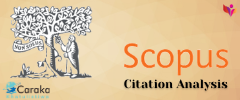Planning for Cultivation Numerical Literacy in Mathematics Learning for Minimum Competency Assessment (AKM) in Elementary Schools
Abstract
Keywords
Full Text:
PDFReferences
Allen, C. E., Froustet, M. E., LeBlanc, J. F., Payne, J. N., Priest, A., Reed, J. F., Worth, J. E., Thomason, G. M., Robinson, B., & Payne, J. N. (2020). National Council of Teachers of Mathematics. The Arithmetic Teacher, 29(5), 59. https://doi.org/10.5951/at.29.5.0059
Arifin, Z., & Retnawati, H. (2017). Developing an Instrument to Measure Mathematics Higher Order Thinking Skills of 10th Grade Student in Senior High School. PYTHAGORAS: Jurnal Pendidikan Matematika, 12(1), 98. https://journal.uny.ac.id/index.php/pythagoras/article/view/14058
Dian Rachmawati, Rizza Megasari, Sri Umi Mintarti Widjaja, R. I. & R. A. D. K. (2022). Development of reading literacy test questions for economic subjects based on the minimum competency assessment. In Business, Economic and Sustainability Science (BESS). https://doi.org/https://doi.org/10.2478/9788366675711-007
Ennis, R. H. (2011). The Nature of Critical Thinking : An Outline of Critical Thinking Dispositions. 1–8. https://education.illinois.edu/docs/default-source/faculty-documents/robert-ennis/thenatureofcriticalthinking_51711_000.pdf
Erickson, A. (2019). Introducing Information Literacy to Mathematics Classrooms: A Cross-Case Analysis. Numeracy, 12(1). https://doi.org/10.5038/1936-4660.12.1.7
Ferdianto, F., Sukestiyarno, Y. L., & Widowati, I. J. (2022). Mathematical Thinking Process On Numeracy Literacy Problems For Middle School Students. Journal of Positive School Psychology, 6(8), 6909–6923. https://www.journalppw.com/index.php/jpsp/article/view/11007
Guhl, P. (2019). The Impact of Early Math and Numeracy Skills on Academic Achievement in Elementary School. Master’s Theses & Capstone Projects, 1–35. https://nwcommons.nwciowa.edu/cgi/viewcontent.cgi?article=1145&context=education_masters
Hayati, P., Sutiarso, S., & Dahlan, S. (2020). Analysis of Mathematical Communication Skills of Junior High School Students Reviewed from Gender and School Origin. 422(Icope 2019), 147–151. https://doi.org/10.2991/assehr.k.200323.108
Hayati, T. R., & Kamid, K. (2019). Analysis of Mathematical Literacy Processes in High School Students. International Journal of Trends in Mathematics Education Research, 2(3), 116–119. https://doi.org/10.33122/ijtmer.v2i3.70
Helstad, K., Solbrekke, T. D., & Wittek, A. L. (2017). Exploring teaching academic literacy in mathematics in teacher education. Education Inquiry, 8(4), 318–336. https://doi.org/10.1080/20004508.2017.1389225
Machromah, I. U., Utami, N. S., Setyaningsih, R., Mardhiyana, D., Wahyu, L., & Fatmawati, S. (2021). Minimum Competency Assessment: Designing Tasks to Support Students’ Numeracy. Turkish Journal of Computer and Mathematics Education, 12(14), 3268–3277. https://turcomat.org/index.php/turkbilmat/article/view/10898
Meeks, L., Kemp, C., & Stephenson, J. (2014). Standards in literacy and numeracy: Contributing factors. Australian Journal of Teacher Education, 39(7), 106–139. https://doi.org/10.14221/ajte.2014v39n7.3
Miller, T. (2018). Developing numeracy skills using interactive technology in a play-based learning environment. International Journal of STEM Education, 5(1). https://doi.org/10.1186/s40594-018-0135-2
Novitasari, M., Sutama, Narimo, S., Fathoni, A., Rahmawati, L., & Widyasari, C. (2020). Habituation of digital literacy and critical thinking in mathematics in elementary school. International Journal of Scientific and Technology Research, 9(3), 3395–3399. https://www.ijstr.org/final-print/mar2020/Habituation-Of-Digital-Literacy-And-Critical-Thinking-In-Mathematics-In-Elementary-School.pdf
OECD. (2013). PISA 2012 Assessment and Analytical Framework: Mathematics, Reading, Science, Problem Solving and Financial Literacy. OECD Pubishing. https://doi.org/http://dx.doi.org/10.1787/9789264190511-en
Purpura, D. J. (2010). Informal Number-Related Mathematics Skills : An Examination of the Structure of and Relations Between These Skills in Preschool. 1–172. https://doi.org/https://doi.org/10.3102/0002831212465332
Putri Hapsari, I., Victor Didik Saputro, T., & Damas Sadewo, Y. (2022). Mathematical Literacy Profile of Elementary School Students in Indonesia: a Scoping Review. Journal of Educational Learning and Innovation (ELIa), 2(2), 279–295. https://doi.org/10.46229/elia.v2i2.513
Rizki, L. M., & Priatna, N. (2019). Mathematical literacy as the 21st century skill. Journal of Physics: Conference Series, 1157(4), 0–5. https://doi.org/10.1088/1742-6596/1157/4/042088
Sachdeva, S., & Eggen, P.-O. (2021). Learners’ Critical Thinking About Learning Mathematics. International Electronic Journal of Mathematics Education, 16(3), em0644. https://doi.org/10.29333/iejme/11003
Saefurohman, S., Maryanti, R., Azizah, N. N., Fitria, D., Husaeni, A., Wulandary, V., & Irawan, A. R. (2021). Efforts to increasing numeracy literacy of Elementary School Students through Quiziz learning media. ASEAN Journal of Science and Engineering Education, 1(3), 167–174. https://doi.org/https://doi.org/10.17509/ajsee.v3i1.38570
Salminen, J., Khanolainen, D., Koponen, T., Torppa, M., & Lerkkanen, M. K. (2021). Development of Numeracy and Literacy Skills in Early Childhood—A Longitudinal Study on the Roles of Home Environment and Familial Risk for Reading and Math Difficulties. Frontiers in Education, 6(October). https://doi.org/10.3389/feduc.2021.725337
Setiana, D. S., Purwoko, R. Y., & Sugiman. (2021). The application of mathematics learning model to stimulate mathematical critical thinking skills of senior high school students. European Journal of Educational Research, 10(1), 509–523. https://doi.org/10.12973/EU-JER.10.1.509
Simorangkir, F. M. A., Sinaga, F. I. S. H., & H.S., D. W. S. (2021). The culture of numeric literacy with HOTS problems in mathematics learning. Journal of Mathematics and Natural Sciences, 1(2), 52. https://doi.org/10.24114/jmns.v1i2.33218
Smith, C., & Cekiso, M. (2020). Teachers’ understanding and use of visual tools in their numeracy classrooms: A case study of two primary schools in gauteng. South African Journal of Childhood Education, 10(1), 1–8. https://doi.org/10.4102/SAJCE.V10I1.887
Suratmi, Laihat, Asnimar, & Ela Okta Handini. (2020). Teachers’ Understanding of HOTS based Assessment in Elementary Schools. The 2nd International Conference on Elementary Education, 2(23), 1157–1164. http://proceedings2.upi.edu/index.php/icee/article/view/728
Susetyawati, M. M. E., & Nuryani, C. E. (2021). Developing Mathematics HOTS Test Items in Essay. Journal of Physics: Conference Series, 1823(1). https://doi.org/10.1088/1742-6596/1823/1/012041
Susperreguy, M. I., Lira, C. J., & Lefevre, J. A. (2022). Cross-Cultural Comparisons of Home Numeracy and Literacy Environments: Canada, Mexico, and Chile. Education Sciences, 12(2). https://doi.org/10.3390/educsci12020062
Sutama, Novitasari, M., & Narimo, S. (2020). Numerical Literacy Ability In Learning Mathematics Based on 21st Century Skills in Primary School. Ilkogretim Online - Elementary Education Online, 19(4), 194–201. https://doi.org/10.17051/ilkonline.2020.04.121
Sutama, S., Fuadi, D., Narimo, S., Hafida, S. H. N., Novitasari, M., Anif, S., Prayitno, H. J., Sunanih, S., & Adnan, M. (2022). Collaborative mathematics learning management: Critical thinking skills in problem solving. International Journal of Evaluation and Research in Education, 11(3), 1015–1027. https://doi.org/10.11591/ijere.v11i3.22193
Umar, & Widodo, A. (2021). How Is The Student’s Numeracy Ability During Learning In The Pandemic Era. Jurnal Scientia, 10(1), 77–82. https://infor.seaninstitute.org/index.php/pendidikan/article/view/186
Utami, R. A. S., Widodo, J. S., Siagian, T. H., & Ragamustari, S. K. (2020). Numerical Literacy Among Senior High School Students at Alumni Course Institution in Jakarta Branch: Critical Literacy in Numeral Data Interpretation. Proceedings of the International University Symposium on Humanities and Arts 2020, 593(Inusharts 2020), 247–253. https://www.atlantis-press.com/article/125962581.pdf
Widana, I. W. (2017). Higher Order Thinking Skills Assessment (Hots). JISAE: Journal of Indonesian Student Assessment and Evaluation, 3(1), 32–44. https://doi.org/10.21009/jisae.v3i1.4859.
DOI: https://doi.org/10.53400/mimbar-sd.v9i3.51774
Refbacks
- There are currently no refbacks.
Copyright (c) 2022 Mimbar Sekolah Dasar

This work is licensed under a Creative Commons Attribution-NonCommercial-ShareAlike 4.0 International License.
View Mimbar Sekolah Dasar Stats



.png)
